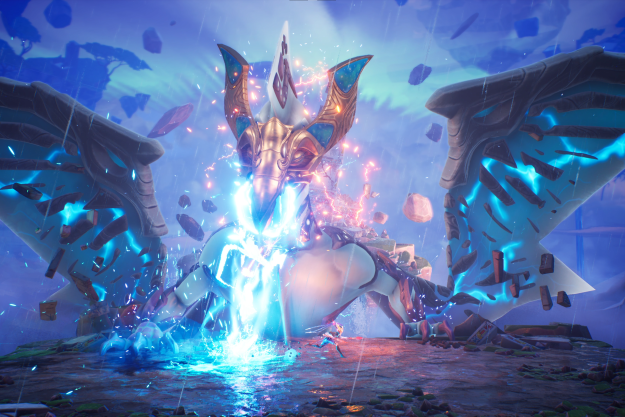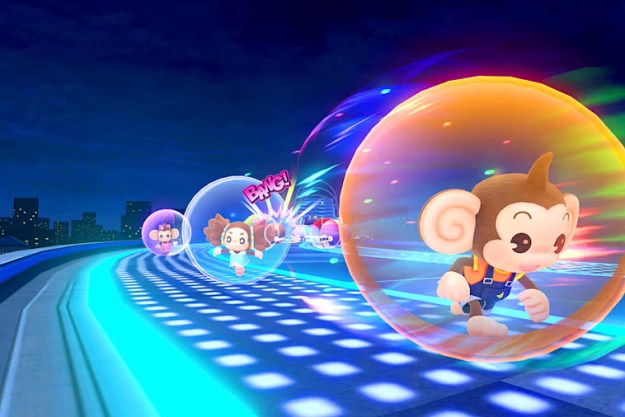Stretched across the wind-blasted plains lie a string of bubble-domes, neatly wrapped in dancing wind-powered turbines. This was the first colony. Peaking through clouds of burnt-orange dust, the limbering colony survived. Weather-worn, and certainly not without casualties, it remained a testament of humanity’s resolve; it was the triumph of the engineers, the physicists, the botanists, the politicians, the artists, the teachers — the people — who made it possible.
Surviving Mars, Paradox Interactive’s recent Mars colonization simulator, can be a powerful game, in no small part due to the exacting nature of its execution. Like many of Paradox’ games, it is a very dedicated simulation that offers (and demands) strict attention to detail. You need to build a balanced ecosystem that generates enough food, water, air, other resources for your colony to survive and grow. It’s a game all about persevering in spite of the cruelty that the red planet will surely visit on its first explorers. But because of that, it’s also very much about the narrative you construct with it.

With formula can be enhanced by expertise — Knowing more of the science brings the science fiction to life. It is, perhaps, unsurprising then that a number of specialists including physicists, historians, and even amateur rocket scientists have taken to streaming Surviving Mars, and games like it, specifically because of that emergent drama. That’s not too different than what most streamers do. After all, the dynamic narrative created by someone playing the game live with an audience is part of why so many people stream and watch games on broadcasting platforms like Twitch. The difference here, though, for these games, the streamers are intellectuals and academics, offering plenty of opportunities to not only buy into the kick and the swell of the games themselves, but also the real-world history and science behind the rockets that may one day take us to the Red Planet.
Introduce the Tubers
Kerbal Space Program was among the first games for academics interested in space to take a genuine look at. First released in early access in 2011, its premise is simple: make things fly to places you want them to be. But, of course, the catch is that you have to do a lot of actual rocket science to make that work. Kerbal is notorious for pulling very few punches — even as it allows all sorts of wonky rocket designs.
Surviving Mars is all about persevering in spite of the cruelty that the red planet will surely visit on its first explorers and the narrative you construct with it.
“I got my start with Kerbal Space program,” YouTuber Scott Manely told Digital Trends. “I had my degree and had an understanding of orbital mechanics and the like, but rocket science started with Kerbal.”
Manely, who refers to himself as the “Astronogamer,” has two degrees — a BSc and an MSc in physics and astronomy and computational physics, respectively. He attempted a third, but quipped that he “spent 5 years at Armagh Observatory realizing that I’d never be able to write a thesis for my research.”
The essentials of Kerbal, as with games like Surviving Mars, are pretty realistic. When you build your rocket, you’ll need a cogent and comprehensive understanding of how rockets work, what sorts of fuel they use, where you should put thrusters to maximize effectiveness, etc. That’s monumentally difficult, though, and people can study Kerbal for weeks and not be able to replicate the Apollo Moon landings, for instance. Turns out that rocket science is hard and NASA does a lot of tough work (who knew?)
Manley and other channels, such as Vintage Space and Cam And Seb, have been running through videos for years that explain everything from what Kerbal doesn’t teach you, and show you how to construct your own replica missions.
The Next Frontier
No one knows exactly what kinds of challenges face us, if and when we ever choose to try to put human beings on Mars. Even with dozens of probes dispatched, we barely know a thing about the planet.
And though Surviving Mars is a game, there’s a definitive mystique to it. The events it covers will be so monumental and feel so close to the tack our real-world is taking (particularly with SpaceX’s recent Falcon Heavy launch, and the forthcoming development of NASA’s SLS), that playing feels a bit like roleplaying some actual mission commander a decade or so down the line. But that temporal proximity and feeling of inevitability belies just how many more challenges we’ve yet to conquer.
Even if the rocketry gets sorted out, there’s the cost, the incredibly long flight to Mars, food, water, soil conditions, oxygen, power, etc. And all of that has to be ready and basically solved before your people even get there. Then, of course, you have to pack some number of humans into a tiny capsule to sling across an unfathomable void in the hopes that they’ll stay safe, mentally acute, and able to do the hard work of simply surviving once they’ve touched down.
Much as might like to think that the first humans on Mars will be permanent residents, Manley says that’s just not realistic.
No one knows exactly what kinds of challenges face us at Mars. And though Surviving Mars is a game, the events it covers will be so monumental and close-to-home that playing feels a bit like roleplaying some actual mission commander a decade or so down the line.
“If you think about it, we send repair crews and extra equipment to the ISS (International Space Station) every few months,” Manley noted. “And yet, things are still breaking all the time and it needs constant support. It has some of the best technology [we’ve] ever put up. Mars will be that much harder.”
There will be resupplies, of course, and it’s possible, even likely that we’ll decide to send down extra materials months or years before people get there, but even then, with a months-long wait in the event of something breaking, it’s hard to imagine anyone living out the rest of their natural life on another world.
Frozen, Rusty Plains
“The first people we send will probably be coming home,” Manley said. “In that sense, Surviving Mars is a bit more optimistic than most… You can have domes, which are silly for anything but crops.”
Domes are just too vulnerable. Maintenance on the glass, not to mention the volume of space you’d need to pressurize and supply with air make all but broad, shallow structures useless. But they do make for a nice visual. Instead, it’s likely that our first habitats will be pre-fabricated buildings that can be either printed on-site, or compressed for shipping and expanded as needed once filled with air.
It’s sobering, but also a poignant reminder that any visitors we send will be visitors. Grounded buildings with sturdy foundations and the makings of a more permanent settlement are just so far beyond the scope of what’s feasible, it’s difficult, even, to simply describe it.
Comparisons are often drawn between a Martian colony and research stations in Antarctica. Both would be extremely secluded, months away from help, and utterly dependent on the supplies they bring in. But, as Bill Nye said, people don’t go to the South Pole to raise a family. They don’t go there for a vacation, or even to start a new life. They go there to work and then they come home.
“Surviving Mars is a bit more optimistic than most… You can have domes, which are silly for anything but crops.”
“In Antarctica, we have a science base. We have McMurdo Station. People go there, they make amazing discoveries, very important… but I know it sounds so romantic to go live on Mars, but Mars is crazy cold. The sun is less than a quarter as bright. And you can’t breathe!” Nye exclaimed in one interview. “If you want to know what Mars is like, go to Antarctica — not the shores where orcas and birds are, but one of the dry valleys where it hasn’t snowed in a century. Take all the scuba tanks you want! Stay there for a couple years!”
Mars is doable (we believe), but not without monumental effort. Even then, we shouldn’t treat it as a given. Mars, like nuclear fusion and other nebulous future-technologies, has been thought to be just around the corner for decades. Even now, though, with all this seemingly just on the horizon, organizations like the Planetary Society and the National Academy of Sciences still say it’s about two decades out — at least if we’re solely relying on NASA without boosting the agency’s budget. Others, like SpaceX, may well touch down years prior. Or, much like the Apollo Applications Program which had detailed plans for everything from a Venusian fly-by or an extensive lunar base, it may recede back into history and become yet another “could have been.”
“We have the scientific knowledge,” Manley says confidently. “But then there’s politics.”






